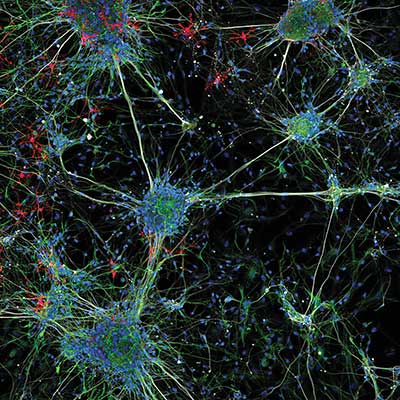Spanning more wavelengths with greater intensity in ever smaller and cheaper packages, illumination systems are a make-or-break component in any modern microscope.
 Microscope developers are a resourceful bunch, opting to use the light source available to them at the time to peer at or below the surface of various materials. Even dating back to the 17th century, Galileo used sunlight to produce the very first optical microscope.
The next illumination sources to become available were lamps such as tungsten (incandescent), xenon, mercury and metal halide vapor. While such lamps can still be found in laboratories today, it was when an entirely new way of generating photons was discovered that the field of microscopy changed forever.
The year 1960 brought with it the invention of the laser. From then until today, researchers have been exploiting every variation of the laser and manipulations of its beam as they become available: from the gas laser to solid-state and the latest in quantum cascade laser (QCL)-based microscopy.
But it’s not just lasers in their various forms that dominate the field; an emergence of low-cost light-emitting diodes — originally made for general lighting — means that LEDs are increasingly being adopted.
For bright-field, transmitted-light techniques, a microscope is usually equipped with an incandescent tungsten-halogen or mercury arc lamp, which is effective and cheap. But in the last decade, LED light sources have increasingly displaced such lamps.
“Besides having a similar color rendering index [CRI], LEDs have a much longer lifetime — >25,000 hours versus approximately 2,000 hours — do not need any warm-up time, and show very little fluctuation during operation. LED light sources do also offer a higher degree of flexibility for integration into hardware and software,” said André Devaux, technical writer at PicoQuant GmbH, Berlin.
Microscope developers are a resourceful bunch, opting to use the light source available to them at the time to peer at or below the surface of various materials. Even dating back to the 17th century, Galileo used sunlight to produce the very first optical microscope.
The next illumination sources to become available were lamps such as tungsten (incandescent), xenon, mercury and metal halide vapor. While such lamps can still be found in laboratories today, it was when an entirely new way of generating photons was discovered that the field of microscopy changed forever.
The year 1960 brought with it the invention of the laser. From then until today, researchers have been exploiting every variation of the laser and manipulations of its beam as they become available: from the gas laser to solid-state and the latest in quantum cascade laser (QCL)-based microscopy.
But it’s not just lasers in their various forms that dominate the field; an emergence of low-cost light-emitting diodes — originally made for general lighting — means that LEDs are increasingly being adopted.
For bright-field, transmitted-light techniques, a microscope is usually equipped with an incandescent tungsten-halogen or mercury arc lamp, which is effective and cheap. But in the last decade, LED light sources have increasingly displaced such lamps.
“Besides having a similar color rendering index [CRI], LEDs have a much longer lifetime — >25,000 hours versus approximately 2,000 hours — do not need any warm-up time, and show very little fluctuation during operation. LED light sources do also offer a higher degree of flexibility for integration into hardware and software,” said André Devaux, technical writer at PicoQuant GmbH, Berlin.
Member Exclusive: To read the complete article, please Login or Register